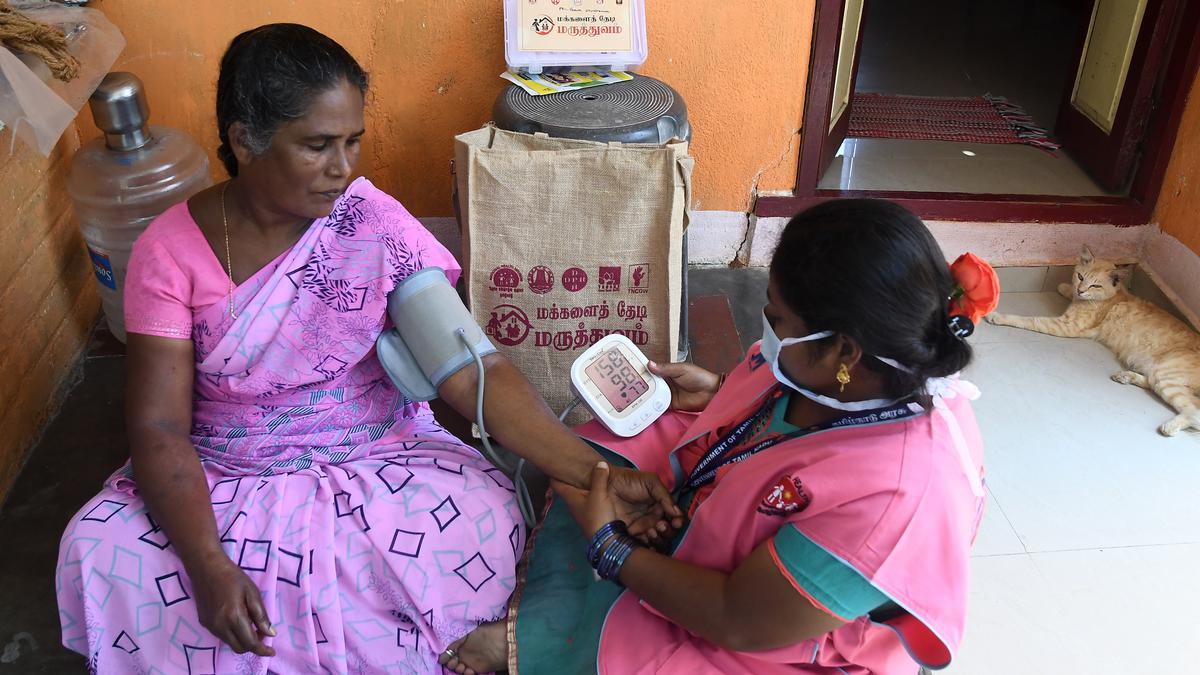
Explained | India’s diabetes epidemic is making India’s TB epidemic worse Premium
The Hindu
Diabetes mellitus is a major risk factor that increases the incidence and severity of tuberculosis. Also, DM and TB co-infections adversely affect TB treatment outcomes in a patient.
Long before COVID-19 devastated us, India has been experiencing the double burden of two debilitating and severe epidemics – type 2 diabetes (a.k.a. diabetes mellitus, DM) and tuberculosis (TB). The figures for both are staggering. Currently, India has around 74.2 million people living with diabetes while TB affects 2.6 million Indians every year. Yet few know how deeply these diseases are interlinked.
The evidence is clear: DM increases the risk of developing respiratory infections. We also know DM is a major risk factor that increases the incidence and severity of TB. Also, DM and TB co-infections adversely affect TB treatment outcomes in a patient. The worry is that among people with TB, the prevalence of DM was found to be 25.3% while 24.5% were pre-diabetic, in a 2012 study in tuberculosis units in Chennai.
It’s important to understand how these diseases work together. DM not only increases the risk of TB, it also delays the sputum smear and culture conversion of an individual affected by both diseases. In other words, reducing the number of TB bacteria to below the threshold required to claim they have ‘healed’ will take longer than usual.
DM impairs cell-mediated immunity; uncontrolled DM affects the cytokine response and alters the defences in the alveolar macrophages. The altered functions of small blood vessels in the lung (due to hyperglycaemia) along with poor nutritional status may facilitate the invasion and establishment of TB. As people with diabetes have already compromised immune function, the risk of TB infection is high. They will also have a higher bacterial load.
The coexistence of TB and DM in patients may also modify TB symptoms, radiological findings, treatment, final outcomes, and prognosis. Individuals with TB and DM are more likely to have cavitary lesions in lower lung fields. Our 2016 study revealed that the TB-DM group showed reduced lung functioning after TB treatment completion compared to the TB non-DM group. There was a greater improvement in radiographic scores among people with TB non-DM compared to DM
Our older study, from 2012, showed that the average number of days taken for smear conversion (from ‘positive’ to ‘negative’) for people with TB and DM (64.5 days) was higher than that for people with TB only (61.5 days).
DM also increases the likelihood of unfavourable TB treatment outcomes, such as treatment failure, relapse/reinfection, and even death. So people with DM and TB suffer more severely and must fight harder to survive – illustrating the greater impact of the twin burden of DM and TB not just on patients but also on the healthcare system, their families, and their communities.











